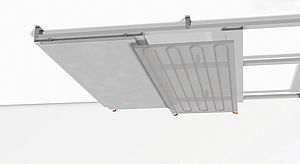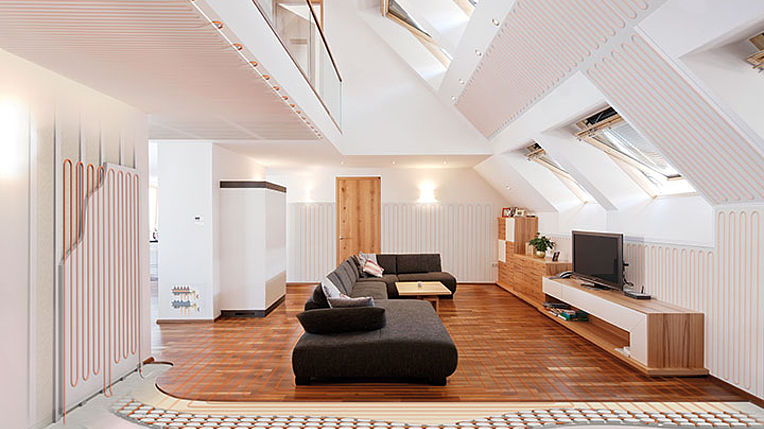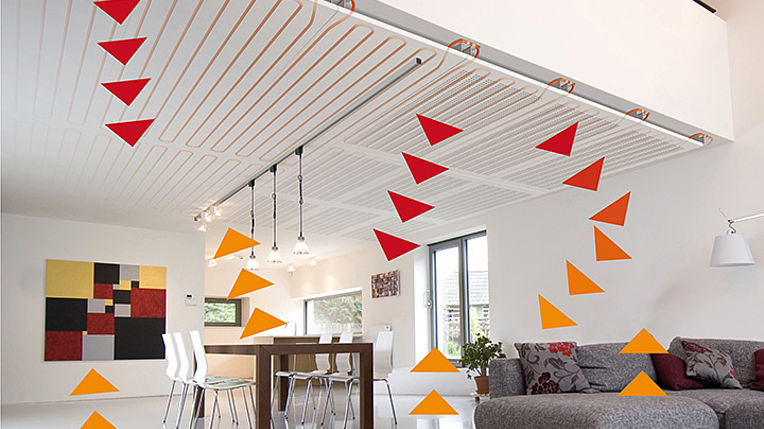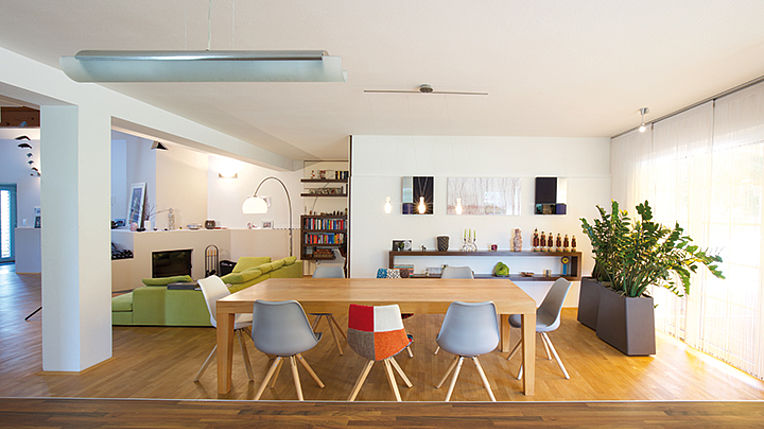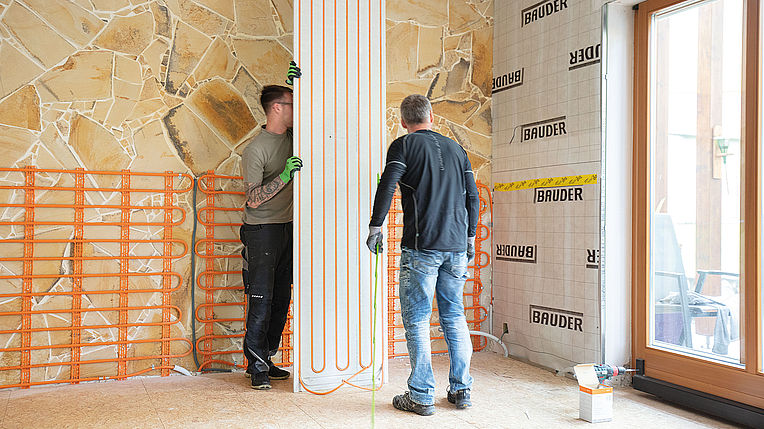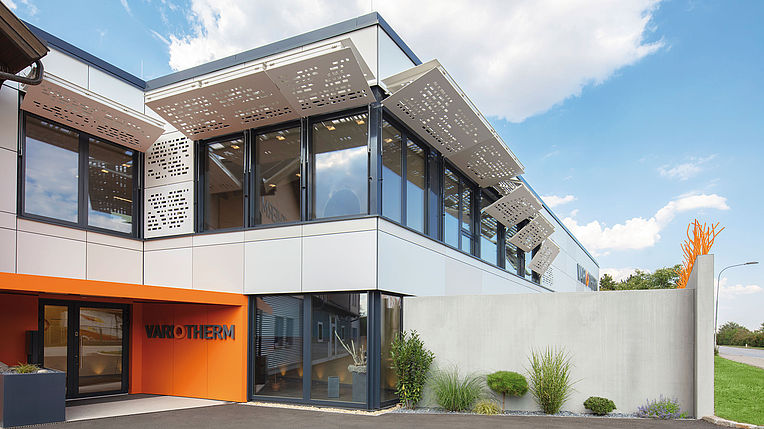THE BENEFITS OF CEILING HEATING - WHERE IT MAKES SENSE TO INSTALL CEILING HEATING
When ceiling heating is installed in places where it makes sense, the many benefits of this energy-saving surface heating can be felt immediately.
What are the benefits of ceiling heating?
- Instead of convection, ceiling heating emits radiant heat. As a result, it is silent and free of forced air.
- Ceiling heating is invisible: furniture and pictures do not need to be taken into account when planning the interior space.
- Ceiling heating can also be installed at a later date.
- Unlike floor heating or wall heating, ceiling heating can emit warmth without any obstacles getting in the way, and is not blocked by thick carpets or large items of furniture.
- If the days and nights get hot during the summer, the same system in the ceiling can be used to cool down the room.
- With a heat pump, water-bearing ceiling heating can be operated with sustainable environmental heat from the ground, groundwater or outside air, thanks to the low flow temperatures.
- With ceiling heating, you save up to 25% on heating costs.
Where does it make sense to install ceiling heating?
Low-temperature ceiling heating can be used with room heights of between 2.5 and 3.5 metres. Here, the radiant heat can be optimally generated with flow temperatures of between 26 and 38 °C.
With room heights of over 3.5 metres, a higher flow temperature is needed. In such cases, we also recommend a combination of ceiling and wall heating.
Areas of use of ceiling heating
Ceiling heating is the ideal heating system for roof extensions or rooms with only a small wall area. It means that the walls can be kept free for the interior furnishings. Interior designers and home owners can use every centimetre of the room in a creative, functional way. The ceiling lighting can also be chosen as required.
Is the beautiful floor meant to stay intact during renovation work, or in listed buildings? In new buildings, are you reluctant to select the floor covering on the basis of whether it is suitable for floor heating? Then ceiling heating is the perfect solution.
In offices and public buildings designed to be used by several people, we recommend ceiling heating with an acoustic function. The acoustic ceiling dampens any noise and reduces reverberation.
The most popular areas of use for ceiling heating are therefore:
- New buildings
- Old buildings
- Private houses and apartments
- Pitched roofs and roof extensions
- Meeting rooms
- Medical buildings
Types of ceiling heating
There are two ceiling heating versions:
- Water-bearing ceiling heating
- Electrically driven heating ceilings
With water-bearing ceiling cooling, water is pumped through the heating pipes at a temperature of 26 to 38 °C. Often, this surface heating is also combined with an energy-saving heat pump, which saves money and helps protect the environment.
With surface heating, the room air temperature can be reduced by up to 2 °C compared to convection heating systems. Even so, the room climate feels comfortable.
Electric heating ceilings may be cheaper to buy, but they need a large amount of energy during ongoing operation.
Another advantage of water-bearing ceiling heating compared to an electrically operated ceiling is that the water-bearing heating can also be used to cool the room in the summer.
Ceiling heating in drywall construction and under plaster
Ceiling heating can be installed in drywall construction and under plaster.
Drywall construction
With ceiling heating in drywall construction, the flexible Variotherm ModulePanels are affixed to the wooden or metal substructure. The heating pipes laid on the rear side are connected to the heating and cooling manifold. The ceiling is then ready to be filled and painted.
Installation under plaster
When ceiling heating is installed under plaster, the heating pipes are affixed directly to the wall using the VarioBar. The EcoHeatingPlaster is used as the first plaster layer (underplaster) and acts as a bed for the VarioProFile pipes.
Use of ceiling heating for cooling purposes
During the summer, ceiling heating with the right energy source can also be used for cooling. Thanks to the closed circuit, cold water flows through the pipes at a temperature of 16 to 20 °C, and the ceiling surface cools down. The person in the room emits excess body heat onto the cool surfaces and feels comfortable. This makes ceiling cooling a good alternative to air conditioning systems.
How does ceiling heating work?
Radiant ceiling heating is a surface heating system. As the name already suggests, it emits warmth using radiation. The infra-red rays are emitted at right-angles to the surface. When they come into contact with a solid object, they turn into heat. This absorbed energy is emitted into the room as heat. Find out more about how ceiling heating works.
Can ceiling heating also dampen noise?
In large rooms, such as offices or public buildings, noise can be a source of disturbance and reduce productivity. This is where ceiling heating with acoustic function comes in. The perforations in the ModulePanels reduce the reverberation time and decrease the level of noise and sounds in the room.

